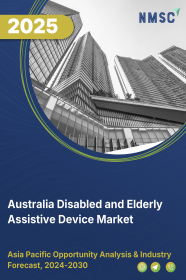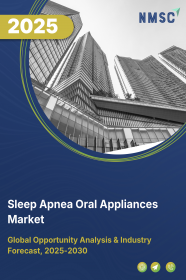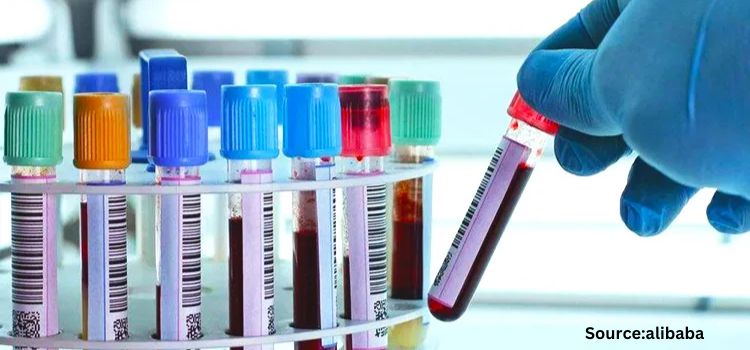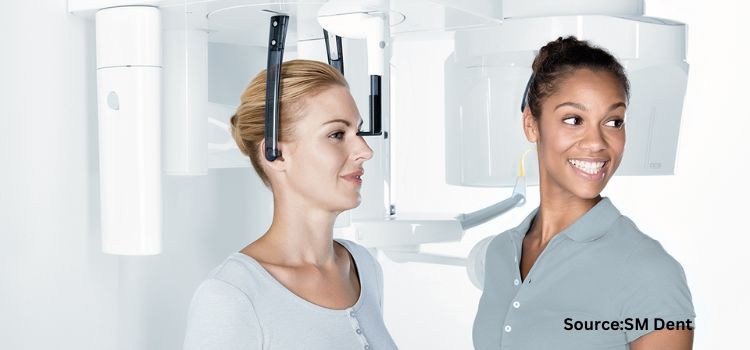
Australia Disabled and Elderly Assistive Device Market by Type (Mobility Impairments, Hearing Impairments, Visual Impairments, Cognitive Impairments, and Self-Care), and by End User (Hospitals, Elderly Nursing Homes, Home Care, and Other End Users) – Opportunity Analysis and Industry Forecast, 2024 – 2030
Industry: Healthcare | Publish Date: 25-Mar-2025 | No of Pages: 152 | No. of Tables: 116 | No. of Figures: 61 | Format: PDF | Report Code : HC1078
US Tariff Impact on Australia Disabled and Elderly Assistive Device Market
Trump Tariffs Are Reshaping Global Business
Australia Disabled & Elderly Assistive Device Market Overview
The Australia Disabled & Elderly Assistive Device Market size was valued at USD 720.4 million in 2023, and is predicted to reach USD 1730.9 million by 2030, at a CAGR of 12.2% from 2024 to 2030.
The disabled & elderly assistive device market refers to a wide range of products and services designed to support the aging population and individuals with disabilities in maintaining their autonomy and improving their quality of life. This market covers medical furniture, hearing aids, mobility aids and living aids, that are crucial for managing chronic conditions and ensuring safety.
Innovations in these areas are driven by the need to address the growing challenges of an aging population and the diverse requirements of individuals with disabilities, making this market integral to enhancing accessibility and wellbeing. This market is fueled by growing rate of disabled individuals, rapid technological advancements, and evolving regulatory landscapes, the assistive device industry prioritizes inclusivity and continuously adapts to meet the ever-changing needs of its diverse user base.
Robust Healthcare Expenditure Drives the Demand for Assistive Devices
Australia's substantial healthcare expenditure serves as a pivotal driver for the demand in the Australia disabled & elderly assistive device market. With the government allocating a significant portion of its GDP to healthcare, there is enhanced funding for healthcare infrastructure, services, and advanced medical devices.
According to the World Bank Group report 2024, the share of healthcare expenditure of GDP in Australia is 10.5%. This financial commitment supports the development and accessibility of a wide range of assistive devices, including mobility aids and specialized medical equipment, aimed at improving the quality of life for elderly and disabled individuals.
Rising Disability Rates Fuels the Australia Disabled & Elderly Assistive Device Market Demand
The rising disability rate is driving the demand for the disabled & elderly assistive device market across the country. With more individuals experiencing disabilities from aging, vision loss, and chronic illnesses, there is an increasing need for innovative assistive devices. These advancements aim to improve mobility, enhance sensory capabilities, and overall quality of life for people with disabilities across the country.
According to the Australian Government report 2024, in Australia around 1 in 6 people, that equates to 18% of the population or roughly 4.4 million individuals, have a disability such hearing loss, blindness and others. This trend emphasizes the importance of developing devices such as mobility aids, home care devices, and personalized medical devices to meet diverse needs and enhance accessibility.
The High Cost Associated with Assistive Devices Hinders the Australia Disabled & Elderly Assistive Device Market Growth
the high cost of assistive devices creates significant barriers for people in developing and underdeveloped countries, particularly those with low or fixed incomes. These essential tools, that greatly improve the quality of life for individuals with disabilities, often remain out of reach due to the stark economic disparities and limited financial resources.
The Integration of AI Into Assistive Device is Expected to Create Ample Growth Opportunity for the Market
The integration of assistive technology such as artificial intelligence (AI) and advanced sensors into disabled & elderly assistive devices represents a transformative leap towards a future where these devices are not only more advanced but also more personalized and accessible than ever before.
AI enables assistive devices to evolve beyond static solutions, becoming dynamic and adaptable to the specific needs of each user. Through machine learning algorithms, these devices learn from user interactions, continuously improving their functionality and responsiveness.
Competitive Landscape
The promising players operating in Australia disabled & elderly assistive device industry includes Mobility Plus. ,Phonak, GN Hearing A/S, Unitron, Rebotec Australia, Stryker Corporation, Baxter, Invacare Corporation, Starkey Hearing Technologies, Medline Industries, Inc., Drive DeVilbiss Healthcare, Magic Mobility, Falcon Mobility, Glide Ltd.,Dalcross, and others.
Australia Disabled & Elderly Assistive Device Market Key Segments
By Type
-
Mobility Impairments
-
Wheelchairs
-
Walkers and Rollators
-
Canes and Walking Sticks
-
Crutches
-
Portable Ramps
-
Others
-
-
Hearing Impairments
-
Hearing aids
-
FM System
-
Deafblind communicators for hearing
-
-
Visual Impairments
-
Screen readers
-
Optical magnifiers
-
Smart phones for vision
-
Braille writing equipment
-
Talking Devices
-
-
Cognitive Impairments
-
Self-Care
-
Shower Chairs
-
Grab-bars/handrails
-
By End User
-
Hospitals
-
Elderly Nursing Homes
-
Home Care
-
Other End Users
Key Players
-
Mobility Plus.
-
Phonak
-
GN Hearing A/S
-
Unitron
-
Rebotec Australia
-
Stryker Corporation
-
Baxter
-
Invacare Corporation
-
Starkey Hearing Technologies
-
Medline Industries, Inc.
-
Drive DeVilbiss Healthcare
-
Magic Mobility
-
Falcon Mobility
-
Glide Ltd.
-
Dalcross
REPORT SCOPE AND SEGMENTATION:
|
Parameters |
Details |
|
Market Size Value in 2023 |
USD 720.4 million |
|
Revenue Forecast in 2030 |
USD 1730.9 million |
|
Value Growth Rate |
CAGR of 12.2% from 2024 to 2030 |
|
Analysis Period |
2023–2030 |
|
Base Year Considered |
2023 |
|
Forecast Period |
2024–2030 |
|
Market Size Estimation |
Million (USD) |
|
Growth Factors |
|
|
Companies Profiled |
15 |
|
Customization Scope |
Free customization (equivalent up to 80 working hours of analysts) after purchase. Addition or alteration to country, regional, and segment scope. |
|
Pricing and Purchase Options |
Avail customized purchase options to meet your exact research needs. |

















 Speak to Our Analyst
Speak to Our Analyst





















